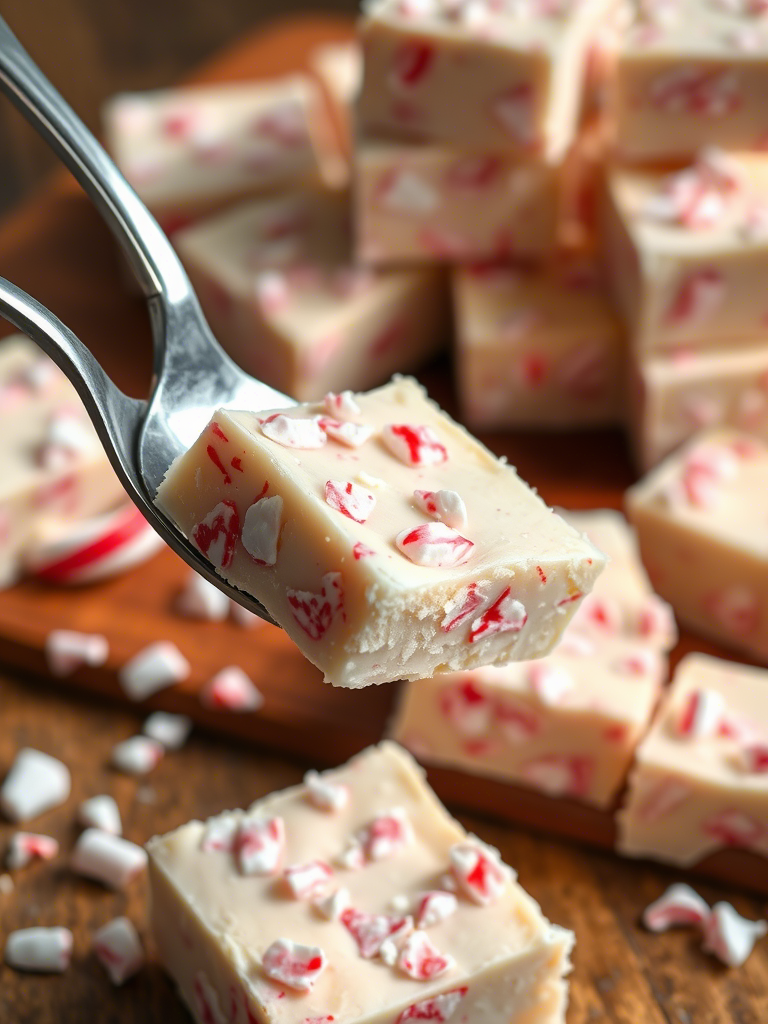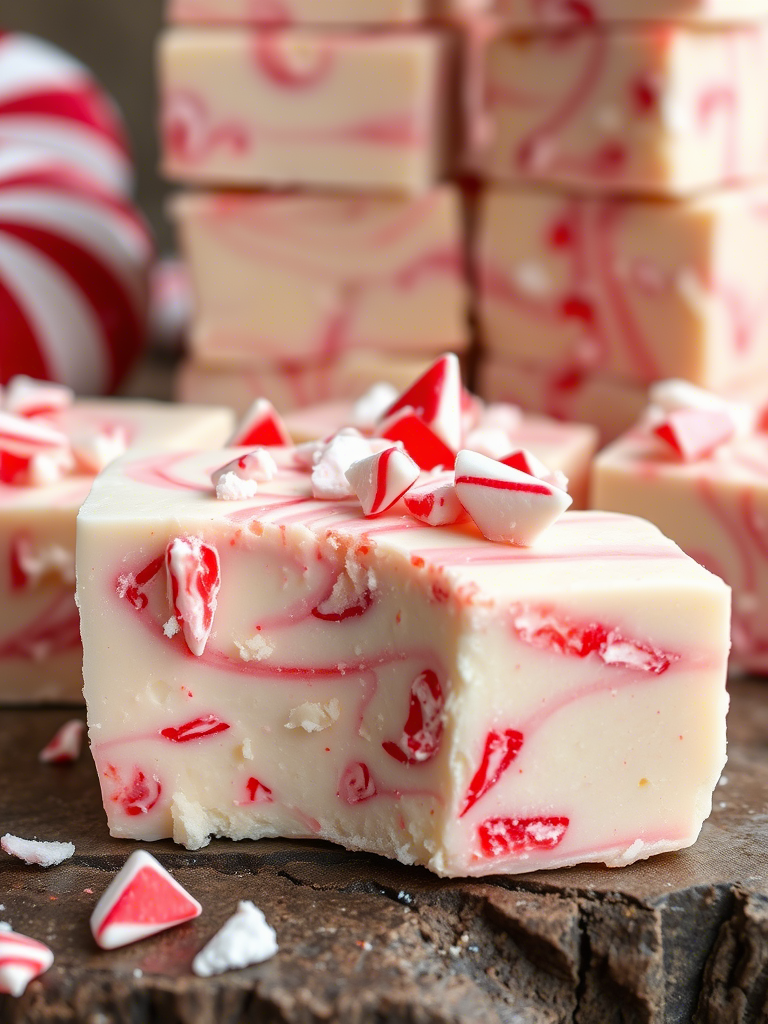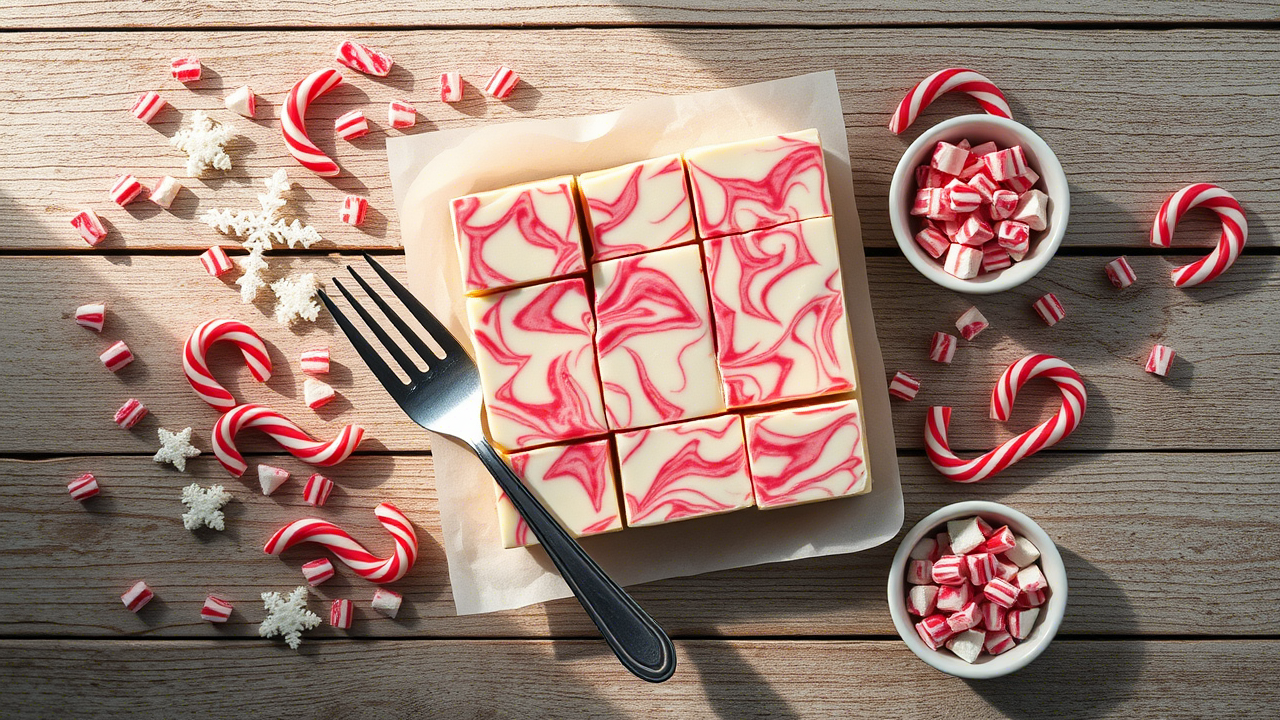Candy cane fudge. Just sayin’ it conjures up holiday vibes thicker than a snowstorm, right? It’s a classic treat that balances creamy, buttery richness with the crisp, minty punch of crushed candy canes. But there’s more to this festive confection than meets the eye — especially if you’re a pro in the kitchen looking to elevate your fudge game. This article’s gonna peel back the layers on candy cane fudge, offering deep dives into its flavor chemistry, texture mastery, and how it fits into modern dessert trends. Spoiler: this ain’t your grandma’s fudge recipe alone. It’s a candy craft, a science, and an art.
Why Candy Cane Fudge Deserves a Spot in Your Repertoire
You might ask, why bother with candy cane fudge when there’s a gazillion other holiday sweets? Well, the answer is deceptively simple: it hits a unique balance. Fudge on its own is decadently rich and creamy. Add peppermint from candy canes, and suddenly, that richness is cut through by a bright, refreshing note that awakens your palate. That contrast? It’s a flavor magic trick.
Studies in flavor pairing show that contrast can boost the overall eating experience, increasing satisfaction by engaging multiple taste receptors simultaneously. The minty sharpness awakens taste buds dulled by sugar and fat, making every bite feel fresh. It’s why candy cane fudge isn’t just a seasonal gimmick but a perennial crowd-pleaser.
Moreover, candy cane fudge fits into current dessert trends emphasizing nostalgic flavors with modern twists. Crafting fudge with high-quality chocolate and fresh peppermint oil, or experimenting with texture by adding crunchy candy cane bits, meets the demand for both comfort and innovation in sweets.
The Chemistry Behind Candy Cane Fudge
Understanding fudge means understanding sugar crystallization — that fine dance between melting and solidifying sugar molecules. In fudge, sugar syrup is heated to the soft ball stage (around 235–240°F or 112–116°C). At this temp, when cooled and beaten, sugar crystals form just right to give fudge its smooth, melt-in-your-mouth texture.
Add candy cane pieces into this matrix, and you introduce a secondary textural element — the hard, crystalline peppermint shards. These shards don’t dissolve immediately, providing pleasant crunch and bursts of minty flavor. But beware — if crushed too fine or added too early, candy canes can dissolve, turning the fudge gritty or overly sweet.
Peppermint itself contains menthol, a compound that stimulates cool receptors in the mouth. That cooling effect contrasts with fudge’s inherent warmth and fat richness, enhancing the sensory experience. When balanced correctly, it creates a multi-layered tasting sensation — creamy, sweet, cool, and crunchy all at once.

Ingredients: The Fine Line Between Tradition and Innovation
Classic candy cane fudge calls for simple ingredients: sugar, butter, milk, chocolate, vanilla, and candy canes. But professionals know ingredient quality and sourcing can change the whole game.
Using high-fat European-style butter contributes to a richer mouthfeel. Whole milk or even cream instead of milk can boost creaminess. Chocolate selection matters — opting for couverture chocolate with higher cocoa butter content enhances smoothness and flavor depth. A good-quality vanilla extract adds subtle complexity.
Candy canes vary hugely in quality and flavor intensity. Artisanal candy canes often have pure peppermint oil and minimal artificial colors, giving a cleaner, brighter flavor. They also tend to be less waxy, which affects how they integrate into fudge.
Innovative chefs push boundaries by introducing peppermint extract or oil alongside candy cane pieces to amplify mint intensity without sacrificing texture. Others experiment with infusing the milk or cream with crushed candy canes before heating to layer flavor throughout.
Step-by-Step Mastery: Techniques for Perfect Candy Cane Fudge
Here’s where things get real. Fudge can be notoriously fickle if you don’t handle it right.
- Temperature Precision: Use a reliable candy thermometer and aim for the soft ball stage. Go too low, and fudge won’t set; too high, and it’ll be dry and crumbly.
- Timing Your Candy Cane Addition: Add crushed candy canes only after the fudge mixture has cooled slightly. Too hot, and the candy melts; too late, and they won’t bind well.
- Beating Technique: After cooling to about 110°F, beat the fudge vigorously. This action initiates sugar crystallization, creating that iconic creamy texture. Overbeating causes graininess; underbeating leaves it runny.
- Cooling and Setting: Pour fudge into a lined pan quickly but carefully, then let it set at room temperature. Refrigeration can cause condensation, dulling the shiny surface.
- Storage: Store fudge airtight at cool room temp or refrigerate to preserve freshness. Candy cane bits can absorb moisture and soften over time, so consume within two weeks for best crunch.
Common Pitfalls and How to Dodge Them
Fudge is forgiving but tricky if you don’t respect the process.
- Grainy Texture: Usually caused by premature crystallization. Prevent by not stirring the sugar syrup while heating and using corn syrup or cream to inhibit crystals.
- Candy Cane Dissolving: Use larger chunks or add candy canes after the fudge is partially cooled.
- Fudge Too Hard or Dry: Overcooking the sugar syrup or adding too little fat. Always measure temperature carefully.
- Lack of Mint Flavor: Candy canes alone might not deliver enough punch. Boost with peppermint extract but use sparingly to avoid overpowering.

Candy Cane Fudge in Professional Contexts: Serving and Presentation
For pros, candy cane fudge isn’t just a kitchen exercise but a product that needs to sell on sight and taste. Presentation matters.
Serving fudge in bite-sized squares with visible candy cane speckles instantly communicates flavor and festivity. Use parchment-lined trays or festive tins for gifting. For upscale events, dust with edible silver glitter or drizzle with white chocolate for contrast.
Pairing candy cane fudge with other desserts can enhance menus — think peppermint mocha or spiced hot chocolate alongside fudge bites for complementary flavor themes. Packaging fudge with care, using airtight containers or wax paper separators, ensures quality for retail or gifting purposes.
Emerging Trends and Future Directions
As consumer palates evolve, fudge makers experiment beyond the classic.
- Vegan fudge with coconut cream and plant-based butter is rising, often paired with natural peppermint oil and vegan candy canes.
- Keto-friendly versions swap sugar for erythritol or stevia blends, although managing crystallization without sucrose is an art form in itself.
- Fusion flavors mix candy cane with unexpected ingredients: chili flakes for heat contrast, espresso for bitter depth, or lavender for floral notes.
There’s also a push toward sustainable and organic ingredients, reflecting broader industry trends.
FAQ and Misconceptions
Is candy cane fudge hard to make?
Not necessarily, but precision is key. Using a good thermometer and timing the candy cane addition right helps prevent common errors.
Can I use peppermint extract instead of candy canes?
You can, but you’ll lose the textural contrast. Many pros combine both for best results.
Does candy cane fudge keep well?
Yes, if stored properly. But expect the candy cane bits to soften after a couple weeks.
Is fudge gluten-free?
Traditional fudge is gluten-free, but always check added flavorings or candy canes for hidden gluten sources.
Final Thoughts: Why Candy Cane Fudge Still Matters
Candy cane fudge is more than a seasonal whimsy. It’s a sophisticated interplay of chemistry, flavor, and texture that rewards mastery. For professionals, it’s a versatile canvas to impress clients, innovate recipes, and honor culinary traditions.
So next time you’re thinking of a holiday treat that’s got it all — creaminess, crunch, festive flair — remember candy cane fudge. Not just joy in a bite, but joy in the craft. Try tweaking your next batch, experiment with ingredients and techniques, and maybe you’ll discover your own signature spin on this classic.
Because when it comes to candy cane fudge, the joy is not just in eating it, but in making it right.
FAQs
Is candy cane fudge hard to make?
Not really, but precise temperature control and timing are crucial for success.
Can I use peppermint extract instead of candy canes?
Yes, but you’ll miss the crunchy texture candy canes add.
Does candy cane fudge keep well?
Yes, if stored airtight and cool, but candy cane bits soften after a couple weeks.
Is fudge gluten-free?
Traditional fudge is gluten-free, but check added ingredients for hidden gluten.
When should I add candy canes to fudge?
Add them after the fudge cools slightly to keep their crunch.
Why does fudge sometimes turn grainy?
Usually from premature sugar crystallization or overbeating.
Can I make vegan candy cane fudge?
Yes, by using coconut cream and plant-based butter with vegan candy canes.
How do I get a strong mint flavor without losing texture?
Combine crushed candy canes with a small amount of peppermint extract.
What temperature should I cook fudge to?
The soft ball stage, around 235–240°F (112–116°C).
Can I refrigerate candy cane fudge?
Yes, but avoid condensation by storing airtight to keep texture intact.

Mariana is a passionate home cook who creates delicious, easy-to-follow recipes for busy people. From energizing breakfasts to satisfying dinners and indulgent desserts, her dishes are designed to fuel both your body and hustle.
When she’s not in the kitchen, she’s exploring new flavors and dreaming up her next recipe to share with the Foodie Hustle community.

